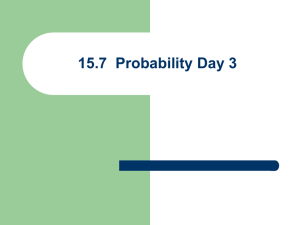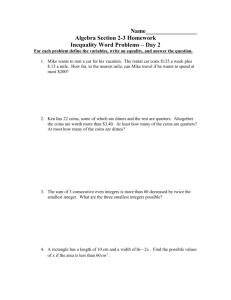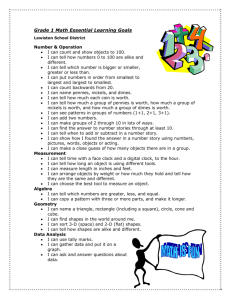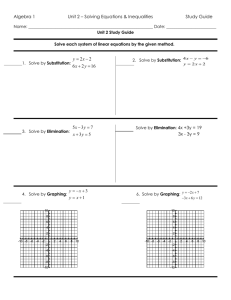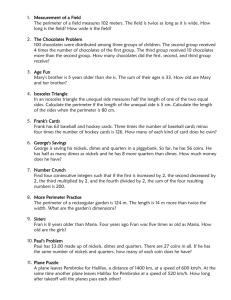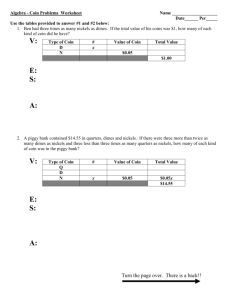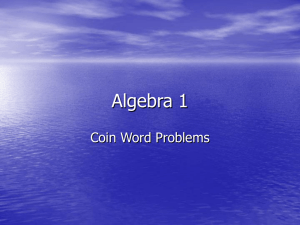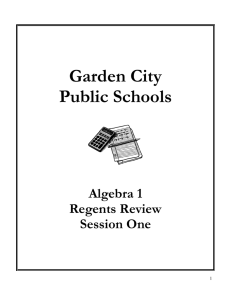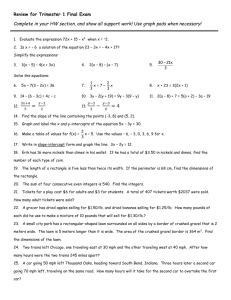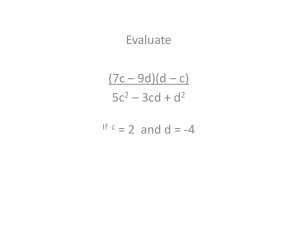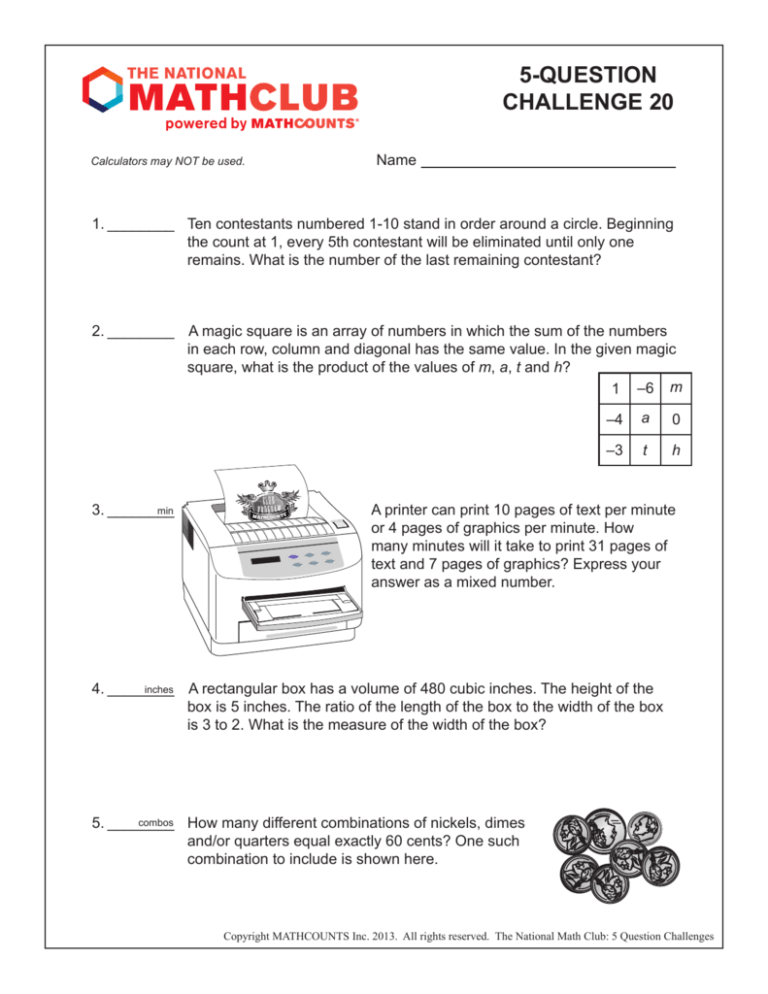
5-QUESTION
CHALLENGE 20
Calculators may NOT be used.
Name
1.�������� Ten contestants numbered 1-10 stand in order around a circle. Beginning
the count at 1, every 5th contestant will be eliminated until only one
remains. What is the number of the last remaining contestant?
2.�������� A magic square is an array of numbers in which the sum of the numbers
in each row, column and diagonal has the same value. In the given magic
square, what is the product of the values of m, a, t and h?
1 –6 m
min
3.��������
–4
a
0
–3
t
h
A printer can print 10 pages of text per minute
or 4 pages of graphics per minute. How
many minutes will it take to print 31 pages of
text and 7 pages of graphics? Express your
answer as a mixed number.
inches A rectangular box has a volume of 480 cubic inches. The height of the
4.��������
box is 5 inches. The ratio of the length of the box to the width of the box
is 3 to 2. What is the measure of the width of the box?
combos How many different combinations of nickels, dimes
5.��������
and/or quarters equal exactly 60 cents? One such
combination to include is shown here.
Copyright MATHCOUNTS Inc. 2013. All rights reserved. The National Math Club: 5 Question Challenges
s
n
tio
5-QUESTION
CHALLENGE 20
lu
o
S
Calculators may NOT be used.
Name
3
1.��������
Ten contestants numbered 1-10 stand in order around a circle. Beginning
the count at 1, every 5th contestant will be eliminated until only one
remains. What is the number of the last remaining contestant?
Drawing a circle, placing the integers 1-10 around it in order, and then going through
the process of crossing out every 5th number is probably the easiest way to solve the
problem. The numbers would be crossed off in the following order: 5, 10, 6, 2, 9, 8, 1, 4, 7. The final remaining number is 3.
–20
2.��������
A magic square is an array of numbers in which the sum of
the numbers in each row, column and diagonal has the same
value. In the given magic square, what is the product of the
values of m, a, t and h?
1
–6
m
–4
a
0
–3
t
h
From the first column, we can see that our common sum is 1 + –4 + –3 = –6. Solving for
m using the first row, we see that m = –6 – (1 + –6) = –6 – (–5) = –1. Solving for a using
the second row, we see that a = –6 – (–4 + 0) = –6 – (–4) = –2. Using a = –2, and solving
for t using the second column, we see that t = –6 – (–6 + –2) = –6 – (–8) = 2. Using m = –1 and solving for h in the third column, we see that h = –6 – (–1 + 0) = –6 – (–1) =
–5. Therefore the product of m, a, t and h is (–1)(–2)(2)(–5) = –20.
4 20 min
3.��������
17
A printer can print 10 pages of text per minute or 4 pages
of graphics per minute. How many minutes will it take to
print 31 pages of text and 7 pages of graphics? Express
your answer as a mixed number.
A printer that prints 10 pages of text per minute can print 1 page of text in 1/10 of a
minute. A printer that prints 4 pages of graphics per minute can print 1 page of graphics
in 1/4 of a minute. Therefore, it will take (31)(1/10) + (7)(1/4) minutes to complete the
job. This is (31)(1/10) + (7)(1/4) = 31/10 + 7/4 = 62/20 + 35/20 = 97/20 = 4 17
20 .
Copyright MATHCOUNTS Inc. 2013. All rights reserved. The National Math Club: 5 Question Challenges
8 inches A rectangular box has a volume of 480 cubic inches. The height of the
4.��������
box is 5 inches. The ratio of the length of the box to the width of the box
is 3 to 2. What is the measure of the width of the box?
If the ratio of the length of the box to the width of the box is 3 to 2, then we can
represent the length and width as 3x and 2x, respectively. The formula for the volume
of a rectangular prism (box) is V = l × w × h, which is (3x)(2x)(5) for our box. Therefore,
480 = (3x)(2x)(5) → 480 = 30x 2 → 16 = x 2 → x = ±4. Since the length and width are
positive values, x = 4. The width of the box is then 2x = 2(4) = 8 inches.
13 combos How many different combinations of nickels, dimes
5.��������
and/or quarters equal exactly 60 cents? One such
combination to include is shown here.
Let’s start with using the most quarters possible, which would be 2 quarters. If we
use 2 quarters, we could get to 60 cents using either 1 or 0 dimes (and 0 or 2 nickels,
respectively). That makes a total of 2 ways with 2 quarters. If we only use 1 quarter,
we can get to 60 cents using 3, 2, 1 or 0 dimes, for a total of 4 ways. Notice that our
number of nickels is just dependent on the number of dimes; there is one option for the
nickels for each option for the dimes. If we use 0 quarters, we can get to 60 cents using
anywhere from 6 to 0 dimes, inclusive. That’s 7 ways. Therefore, there are 2 + 4 + 7 =
13 combinations of nickels, dimes and/or quarters that result in exactly 60 cents.
Copyright MATHCOUNTS Inc. 2013. All rights reserved. The National Math Club: 5 Question Challenges

